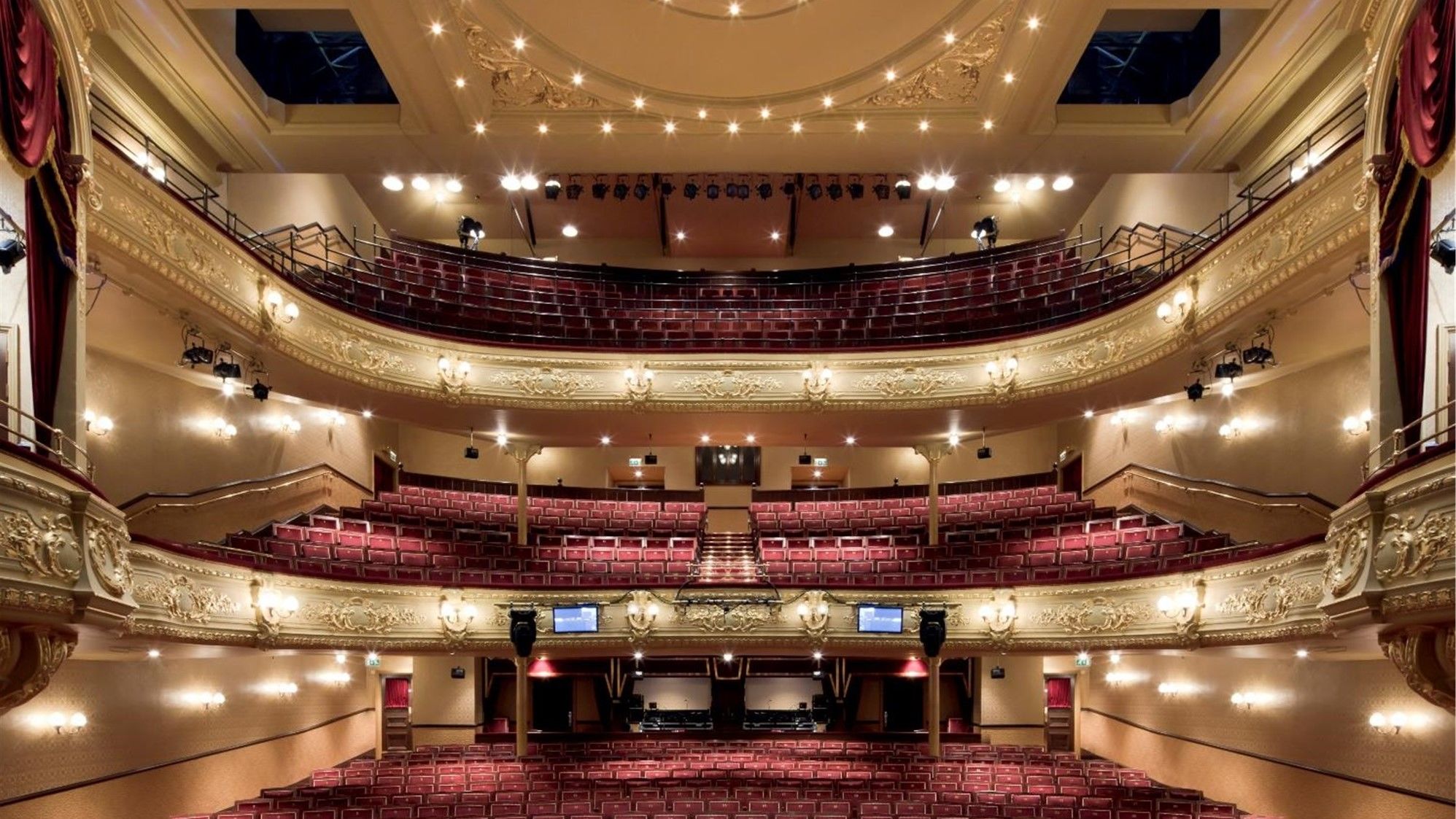
Theatre and placemaking - the need to adapt to survive
There is currently much debate amongst historians, architects and the theatre community about the relationship between theatres and placemaking. That is the recognition that theatres and similar entertainment venues are not just about the bricks and mortar (or fly galleries and orchestra pits) but are also about the people who use them and the places where they are situated.
While there is a view that ‘theatre can be created anywhere’ (and of course it can be), in socio-economic and regeneration terms it must be acknowledged that theatres are important to the communities they serve and physical environments where they are based.
In fact, in these times of austerity, theatres, like libraries and community centres, can find that sources of financial support (in the form of regular budget allocations and grants which help ongoing revenue costs) become increasingly precarious, if not non-existent. In such circumstances, it is vital that in terms of function, accommodation and aspiration, theatres remain relevant to the communities they serve and in return help enrich and sustain those communities.
Therefore, when precious funding does become available (from local or national government, the Arts Council, the Heritage Lottery Fund, private organisations, charitable trusts, or more usually a combination of the above) to invest in capital projects to re-vamp, restore or reinvigorate a theatre, it is vital to remember that the theatre is a ‘vital organ’ within its local context and that it has a symbiotic relationship with the community it serves. In other words, if the theatre does not deeply engage with the needs and aspirations of its communities, it will over time become less relevant and ultimately struggle to be financially sustainable.
To be a success, a theatre needs to adapt to survive. Stakeholder engagement increasingly reveals that a theatre that is only a place for performance is not considered enough. To continue to contribute to placemaking, theatres are increasingly being asked to provide other facilities such art galleries, restaurants, bars, cafes, museums, interactive experiences, public rehearsal facilities, children's education/play facilities, function suites and community meeting spaces (the list goes on!).
Add to this the fact that theatres are often at the centre of a city or town’s heritage and are characterised by iconic designs. For old theatres, there is often an uneasy relationship of trying to combine the functionality, accessibility and commerciality required by the community without compromising the existing historical, magical and creative space for audience and performers.
Presented with such challenges, the role of the architect becomes crucial in creating the accommodation mix which theatre directors need, audiences enjoy, and the community demands.
At Space Architects, we have worked on some outstanding and unique theatre projects including; Newcastle’s Live Theatre, Darlington Hippodrome, The Hullaballoon Children's Theatre, Théâtre Sans Frontières in Hexham, Hull New Theatre and the Home Theatre in Manchester.
Each project throws up different requirements and challenges, but a key consideration for these schemes is how to sensitively provide contemporary state-of-the-art performance spaces and the facilities demanded by the community while also maintaining – and often enhancing historical features.
For certain cases, this means vastly improving the facilities within existing listed buildings. This was true for the Grade II listed Live Theatre on the Newcastle Quayside which was revamped to incorporate a restaurant and new office space on the ground floor.
The complete refurbishment of the premises resulted in a more spacious foyer, new box office and a larger bar and restaurant. Importantly, for the customer experience the auditorium was much improved with more comfortable seating, air conditioning and a better view of the stage.
Author
____________________
David Coundon
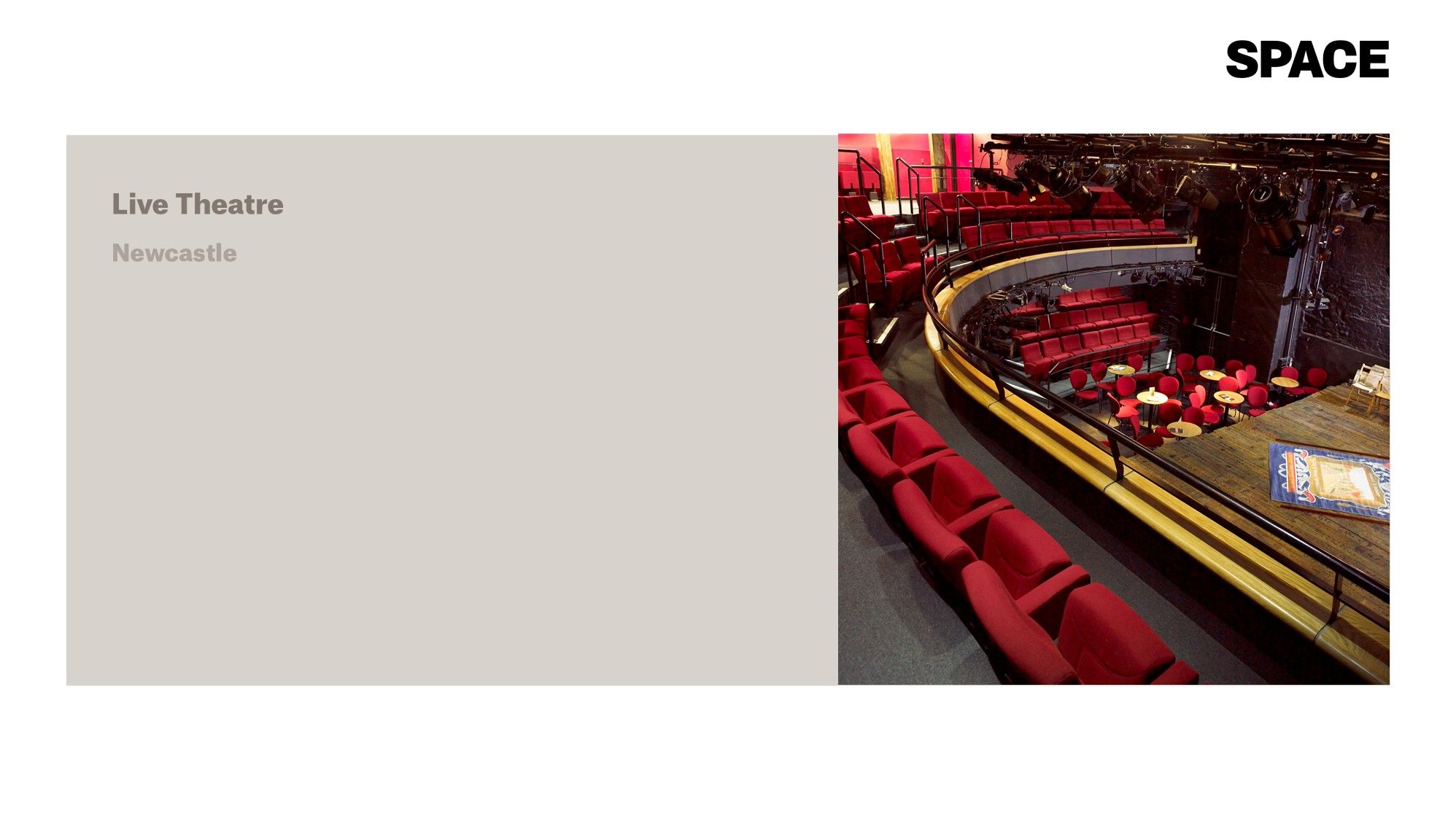
Such issues were also central to our designs for the extensive remodel, extension and refurbishment of the Darlington Hippodrome – another Grade II listed building. Resolving the confusing entrance strategy and making the theatre more accessible for all potential audience members were key aspects of this project.
Central to our strategy was the provision of the essential front of house facilities that stakeholder consultation had revealed that the town in general, and the local community in particular demanded. This included a café, bars, art gallery, heritage gallery, education room, function room and a historical archive. At the same time, new state-of-the-art performance and technical facilities, as well as a new scene dock, get in area, and dressing rooms were accommodated in a purpose built extension. This allowed the original theatre and auditorium to be sensitively restored to its original Edwardian splendour, while at the same time increasing the seating capacity and improving sight lines.
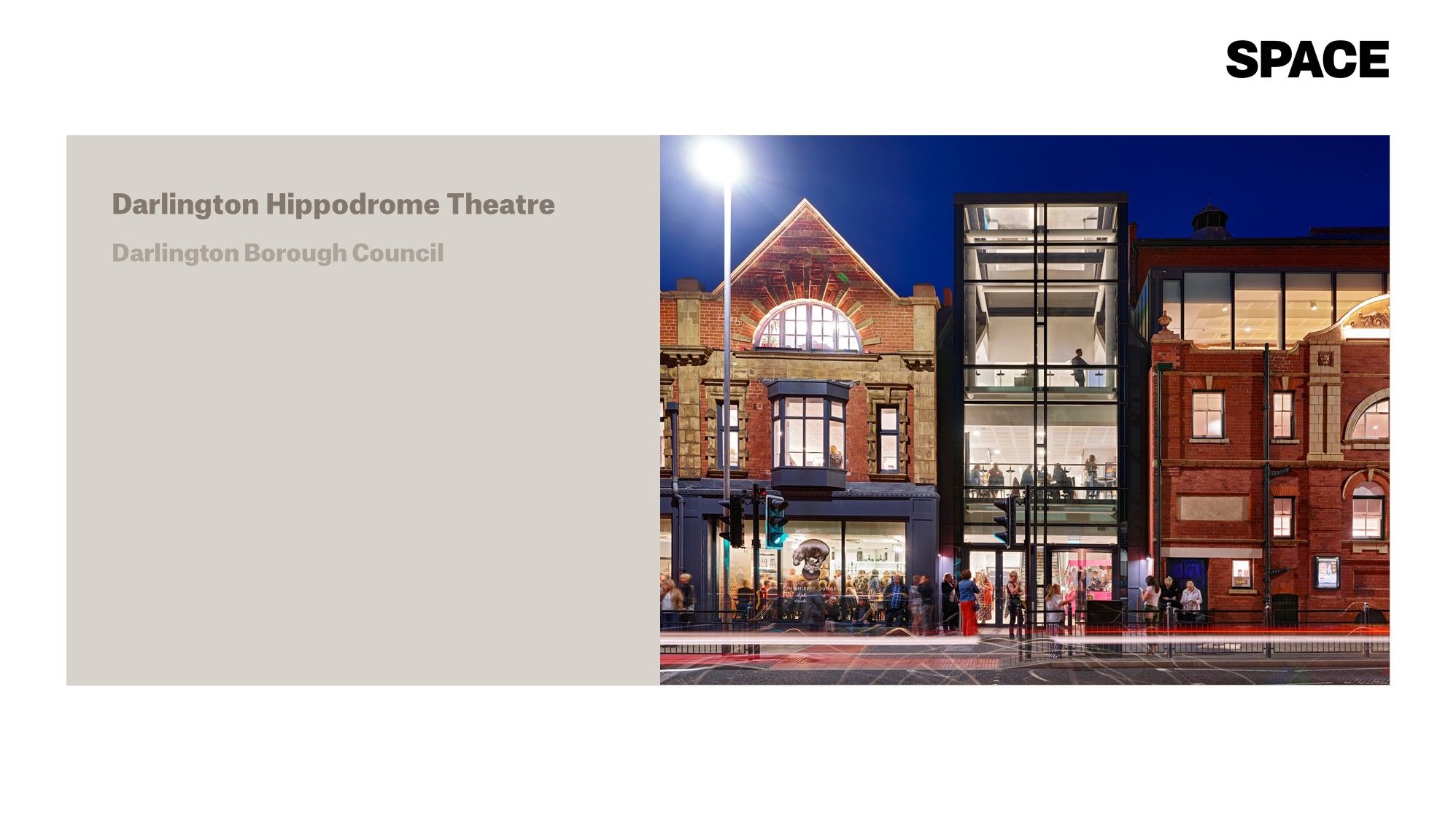
Although a theatre from a different period (circa 1939), similar principles of improved audience and technical facilities with an overall increase in capacity were also applied to the Hull New Theatre.
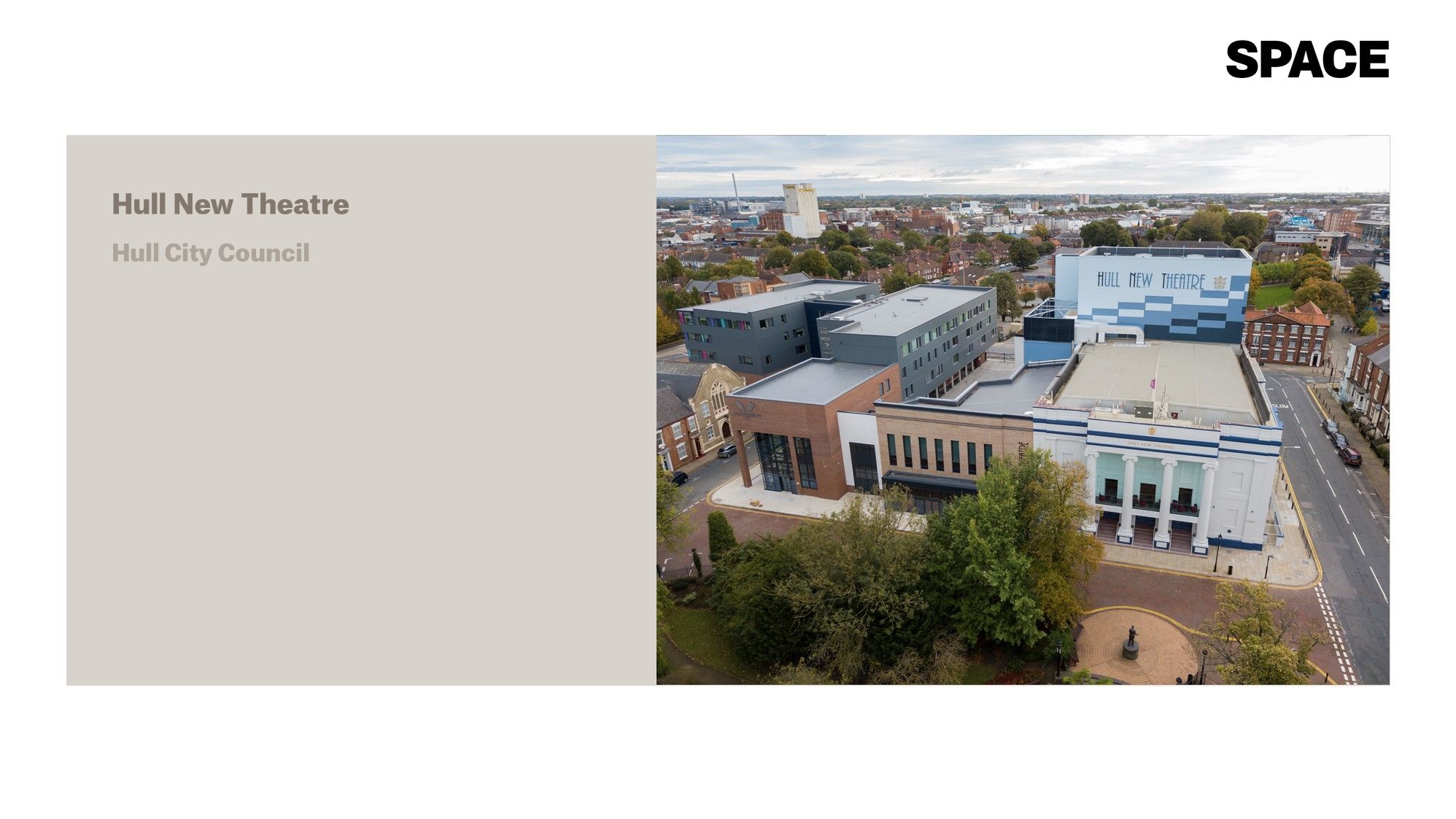
On other occasions, we have designed completely new entertainment venues within redundant historically significant buildings, whether that be listed accommodation or building within a Conservation Area, or both.
For example, we have partnered with Hexham-based Théâtre Sans Frontières on designs to transform a disused railway goods shed and listed water tower into rehearsal space and flexible accommodation capable of hosting exhibitions, media presentations, live theatre and music events (all of which are considered missing from the facilities in the area).
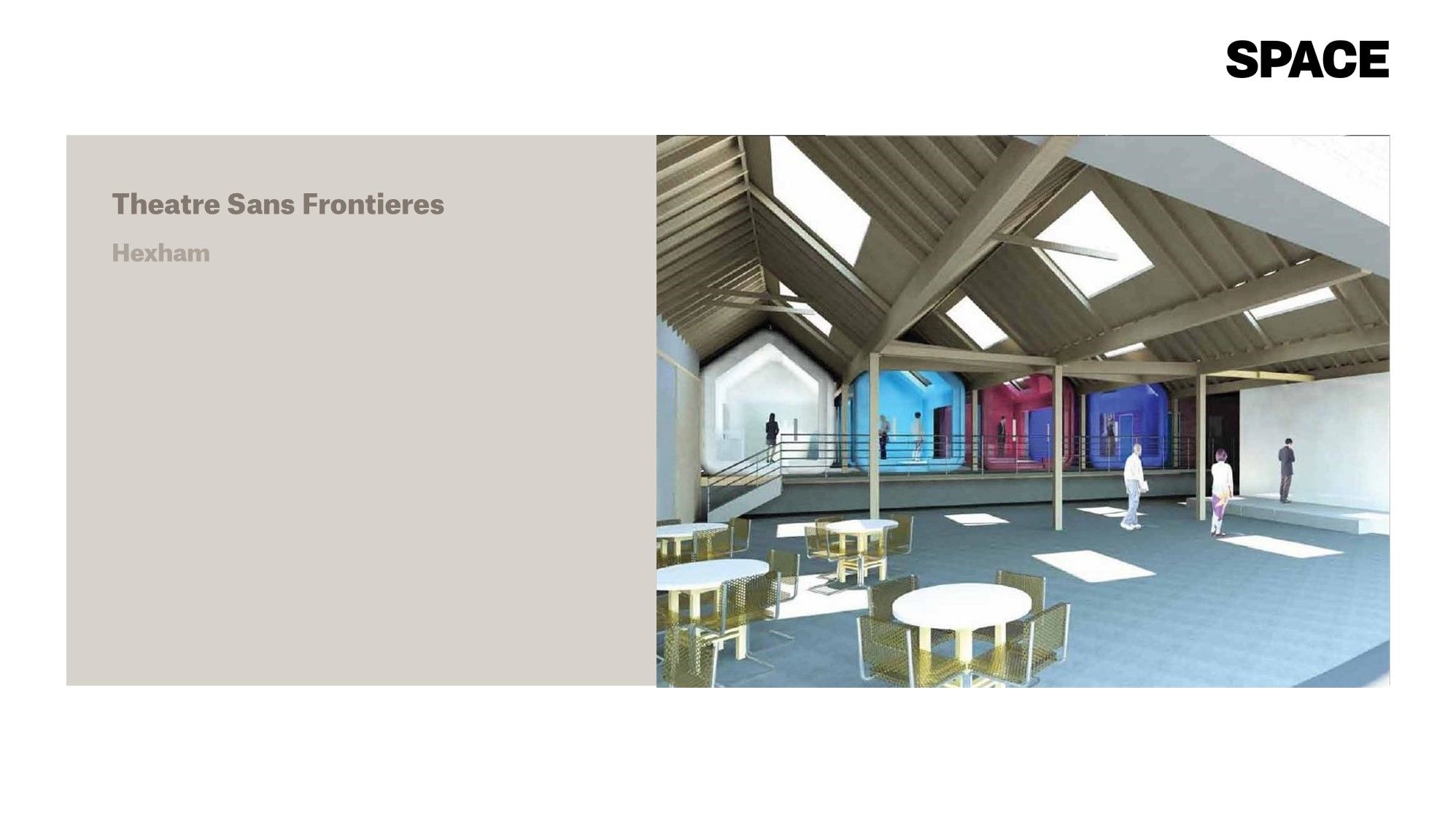
The design of the Hullabaloo Children’s Theatre in Darlington raised similar challenges due to it being situated in a former fire station in a Conservation Area. A 150-seat flexible theatre studio space that was warm and welcoming for children between the age of 0 and 12 was needed.
With developments such as these, proposals must often satisfy local planning and conservation criteria as well as Heritage Lottery and Arts Council requirements. Care is needed to ensure that the requirements are met while still being able to provide the facilities needed by the theatre production company and community alike.
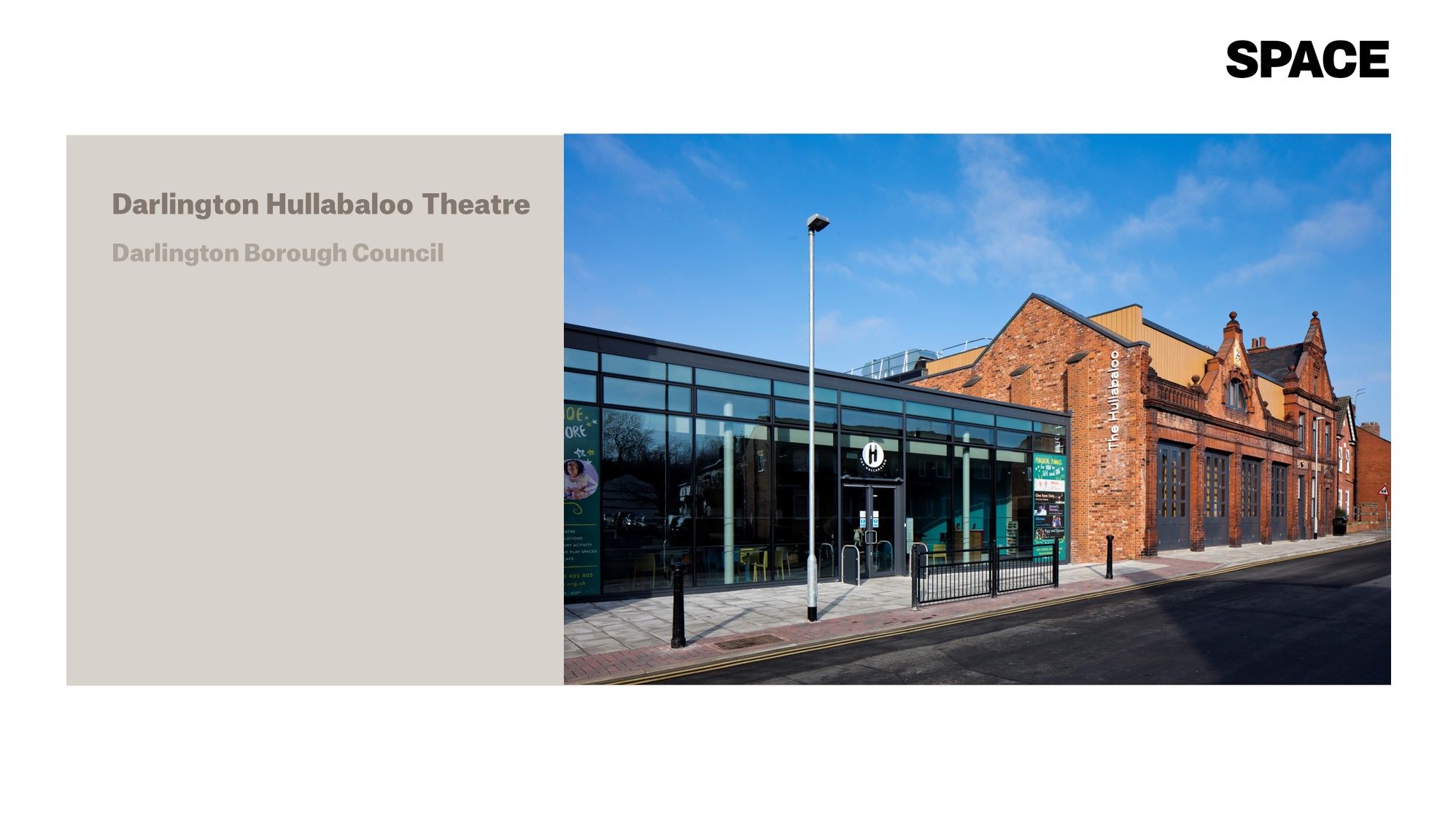
While the above examples address the upgrade of established theatre buildings or the creation of new facilities within an existing historic fabric, sometimes a purpose-built facility is needed to bring new life to a specific area, town or city. An example of this is the Home Theatre in a previously neglected area adjacent to Manchester City Centre, which was in effect created as a new focus for the community.
At Space Architects, we led the delivery of this new build complex which incorporates a 500-seat main theatre, 300-seat studio theatre, five cinemas, 500m2 of contemporary gallery space, rehearsal and production spaces, as well as a large foyer with a bar, restaurant, café, teaching rooms and all the associated back of house spaces. Such a wide range of facilities and users on a relatively constrained site had impacts on design, delivery and buildability.
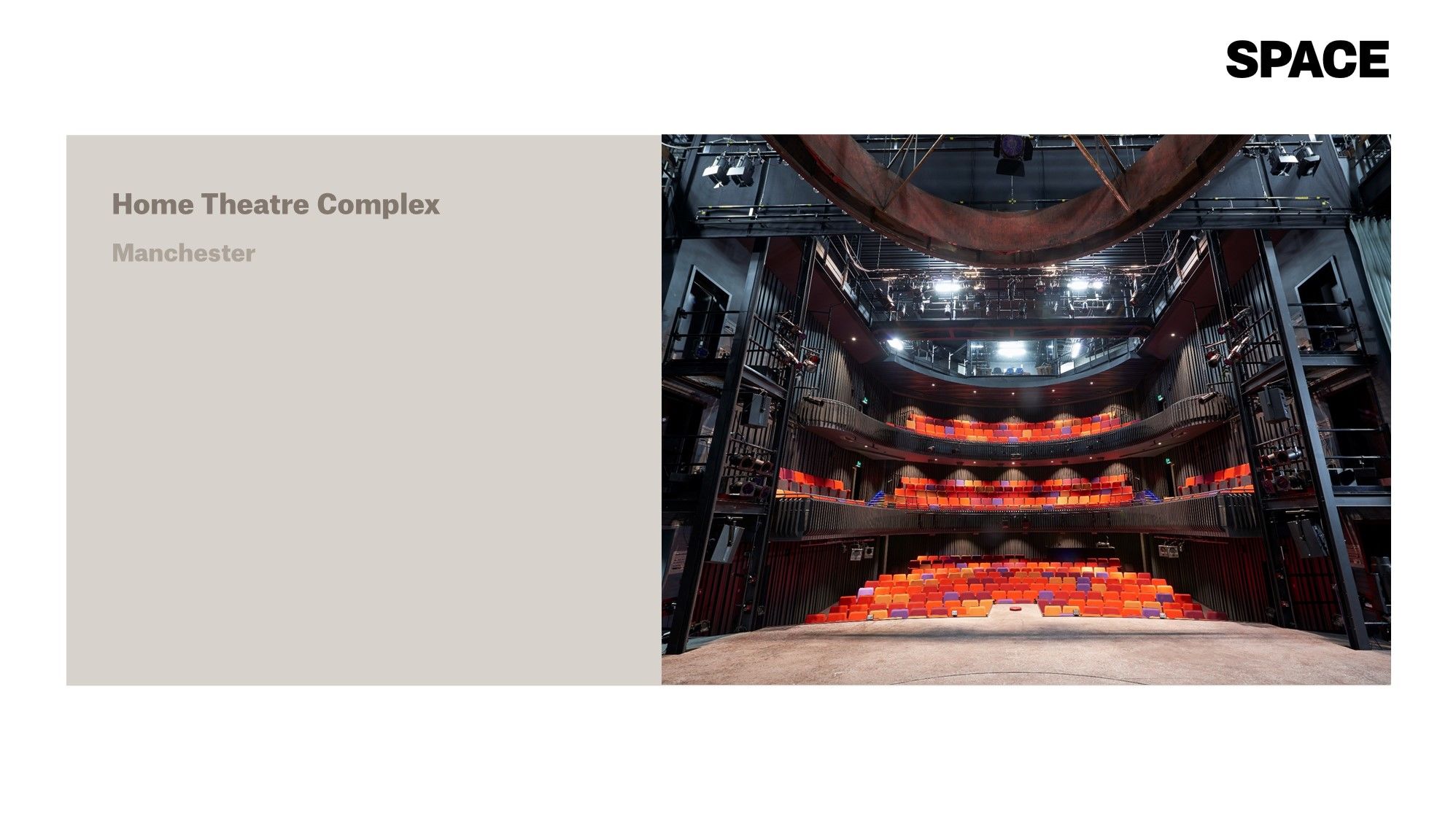
Space’s ability to contribute to, assess, analyse and deliver the imaginative remodelling of entertainment facilities has also been recognised on projects where they are not appointed as architects and designers. This applies to the Technical Advisor role on the recently completed Leeds Playhouse, where one of the key criteria for Space’s appointment by Leeds City Council was their ability to interface and work collaboratively with the council and Playhouse team to make “a significant contribution to getting better value for the client and end user”.
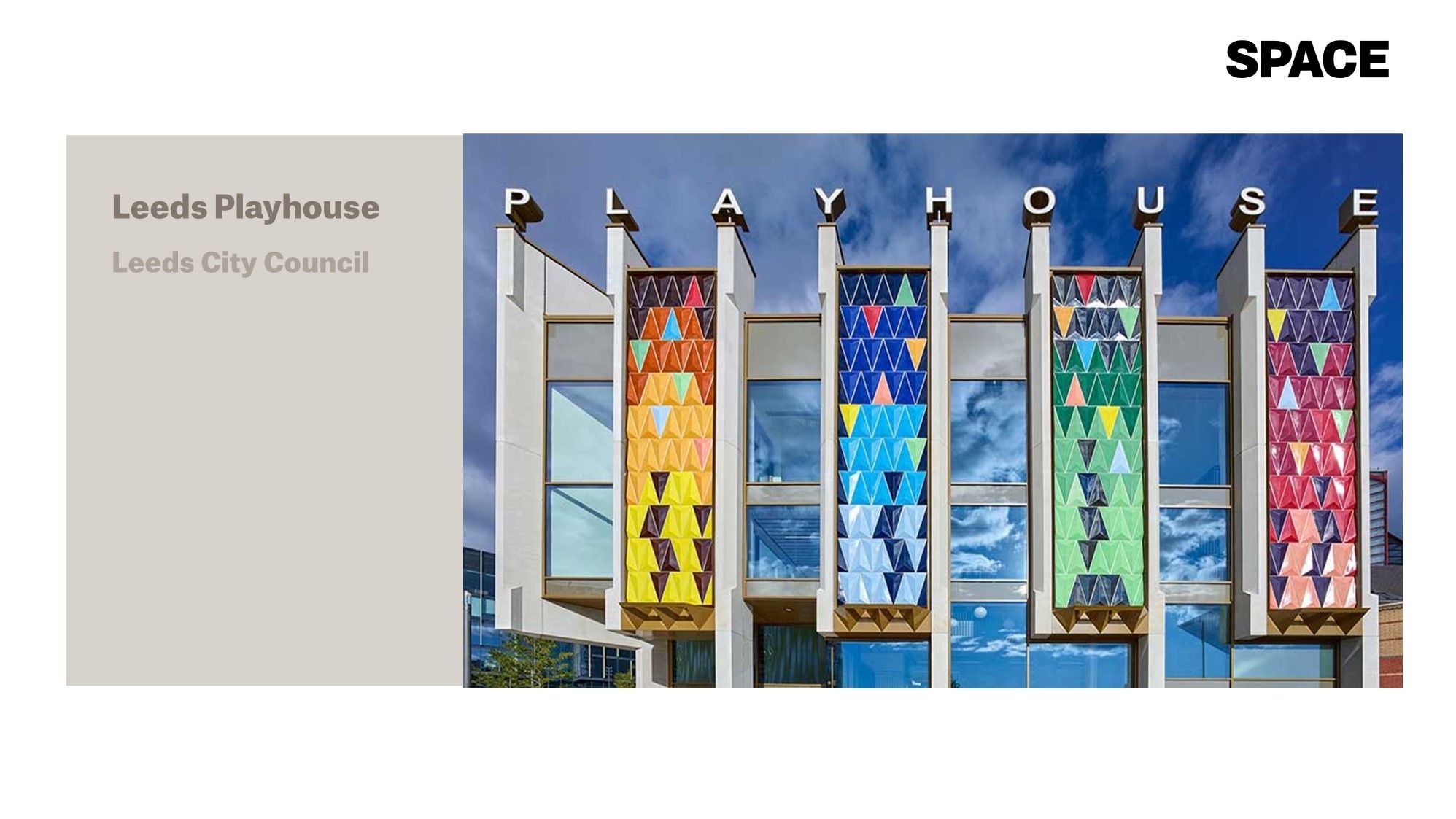
Space are currently working on The Stockton Globe project. This scheme, currently well progressed on site involves the extension, remodel and refurbishment of a former Art Deco theatre to create a revitalised, 3,000 capacity entertainment venue to be managed by the Ambassador Theatre Group. This major restoration project is being funded by Stockton-on-Tees Borough Council and the Heritage Lottery Fund and will see this striking building transformed into a venue fit for the 21st Century.
The regeneration project also includes the creation of a brand new facility, “The Link”, created behind the retained Grade II listed facade of “153 High Street”. This part of the complex will provide a multi-function space including a bar and restaurant and a more intimate 250 seat venue. It will also incorporate interpretative exhibition areas to display materials and exhibits, including historic theatre spotlights, rare photographs of the Beatles and the Rolling Stones, a mosaic created of marble and terrazzo fragments from previously demolished building elements, as well as salvaged signage and other artefacts.
Every single theatre project we work on is different regarding the functional challenges to be addressed, the significance of the historic fabric and the skills needed to both analyse and identify opportunities. A common theme of the work we do with theatres, however, is the need to incorporate the various amenities modern users demand along with high-specification technical facilities that function dictates into buildings that can date back centuries.
We have to be careful to deliver an environment which appeals to the community, excites the audience and allows the theatre director to be creative.
The magic of the theatre is definitely amplified by its setting and although contemporary facilities are loved by the community and are indeed often necessary for the theatre’s very survival, as architects and designers, we won’t ever take anything away from the historic beauty of these magnificent buildings.
